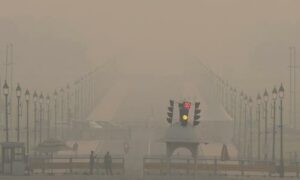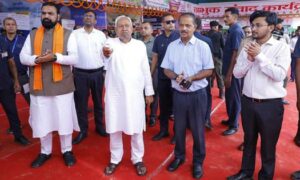
At the end of October, researchers from IIT Kanpur made three attempts to use “cloud seeding” to produce artificial rain over New Delhi in an effort to wash down the city’s dangerously high rates of airborne pollution. The expensive initiative – for which the Delhi government had allocated Rs 3.21 crore – failed to produce any rain.
That isn’t surprising. Cloud seeding experiments around the world have barely produced any rain-on-demand. But it gives politicians get mileage.
Genesis of cloud seeding
Cloud seeding was pioneered in US in early 1940s to produce snow and rain for recreation and farming. A researcher at General Electric Ltd named Vincent Shaefer had realised that water vapor super cooled at -400C, if seeded by suitable agents like dry ice, could produce ice crystals that fall as rain. Cloud seeding requires a good mass of clouds with enough moisture.
On November 13, 1946, Shaefer did the first experiment of cloud seeding in northern part of New York State when he flew a small plane into a thick cloud cover and sprayed dry ice in it to “seed” the clouds.
After a couple of hours, rainfall was reported. However, later experiments were inconclusive and subsequently General Electric stopped these experiments.
Later on, research showed that better cloud seeding could be done by silver iodide crystals sprayed by small aircraft. The crystals act as nucleation agents and start the process of rain formation.
I had the good fortune of having a correspondence with Shaefer, who was a research associate of Irving Langmuir in General Electric when I was working for my PhD at the University of Florida in 1970s on desalination of sea water.
I became interested in finding out how evaporating water gets electrically charged.
One of the things that Shaefer told me is that cloud seeding is very uncertain. Even today, 80 years later, data has shown that the rainfall produced from cloud seeding is statistically insignificant.
IIT-Kanpur did Delhi cloud-seeding trial despite Met dept warning of ‘no clouds’, now says they wanted to collect data for experiment using “indigenous” formula. @neutranino reportshttps://t.co/1oQY3jsz6a
— Suhasini Haidar (@suhasinih) November 2, 2025
Cloud seeding has always been done for producing rain for farming. Use of rain to ease air pollution is a recent phenomenon. It is assumed that fine polluting particles in the range of PM 2.5 to PM 10 could be washed away.
However, the particulate matter in the rainwater could become airborne again as it rises as dust. Besides, the rain would reduce air pollution only temporarily.
However, there are many unknowns in the cloud physics and rain formation process:
1. What gives the clouds an electric charge ? How does the evaporating water from sea get electrically charged?
2. How does the charge in the cloud produce thunder and lightning? How does this discharging help in the rain making?
3. How does the seeding material interfere with the lightning and rain production?
4. How much cloud cover is enough to facilitate the cloud seeding process – how much moisture must the cloud contain for cloud seeding to succeed?
6. How does industrial and vehicular pollution affect cloud formation and the seeding process?
All this makes cloud seeding unpredictable and a waste of taxpayers’ money.
A better solution to reduce air pollution is to reduce it at the source. Polluting sources should be identified and shut off or at least their potential to pollute should be reduced. For example, diesel vehicles in the city should be replaced by electric powered mass transport systems.
But the most important thing to do in cities like Delhi is to plant more trees. There should be a major campaign to plant trees. A green and healthy city normally has an average of more than 35% of its area covered by trees and forest. Unfortunately, Indian cities have tree cover of less than 10%-15%. Planting more trees in cities will reduce air pollution substantially.
Anil K Rajvanshi is the director and honorary secretary of the Nimbkar Agricultural Research Institute in Phaltan. Maharashtra. He is a recipient of the Padma Shri.
📰 Crime Today News is proudly sponsored by DRYFRUIT & CO – A Brand by eFabby Global LLC
Design & Developed by Yes Mom Hosting






